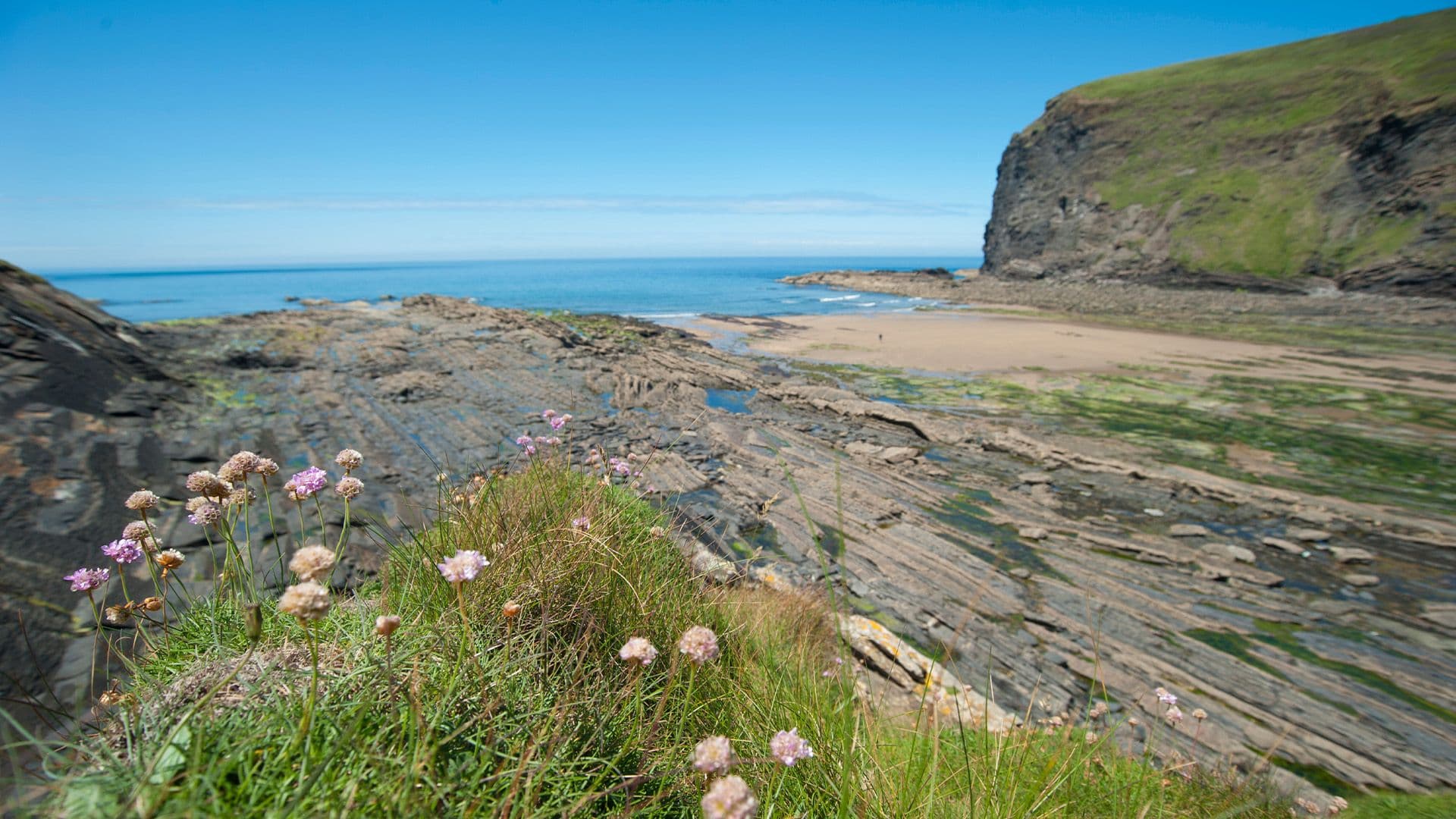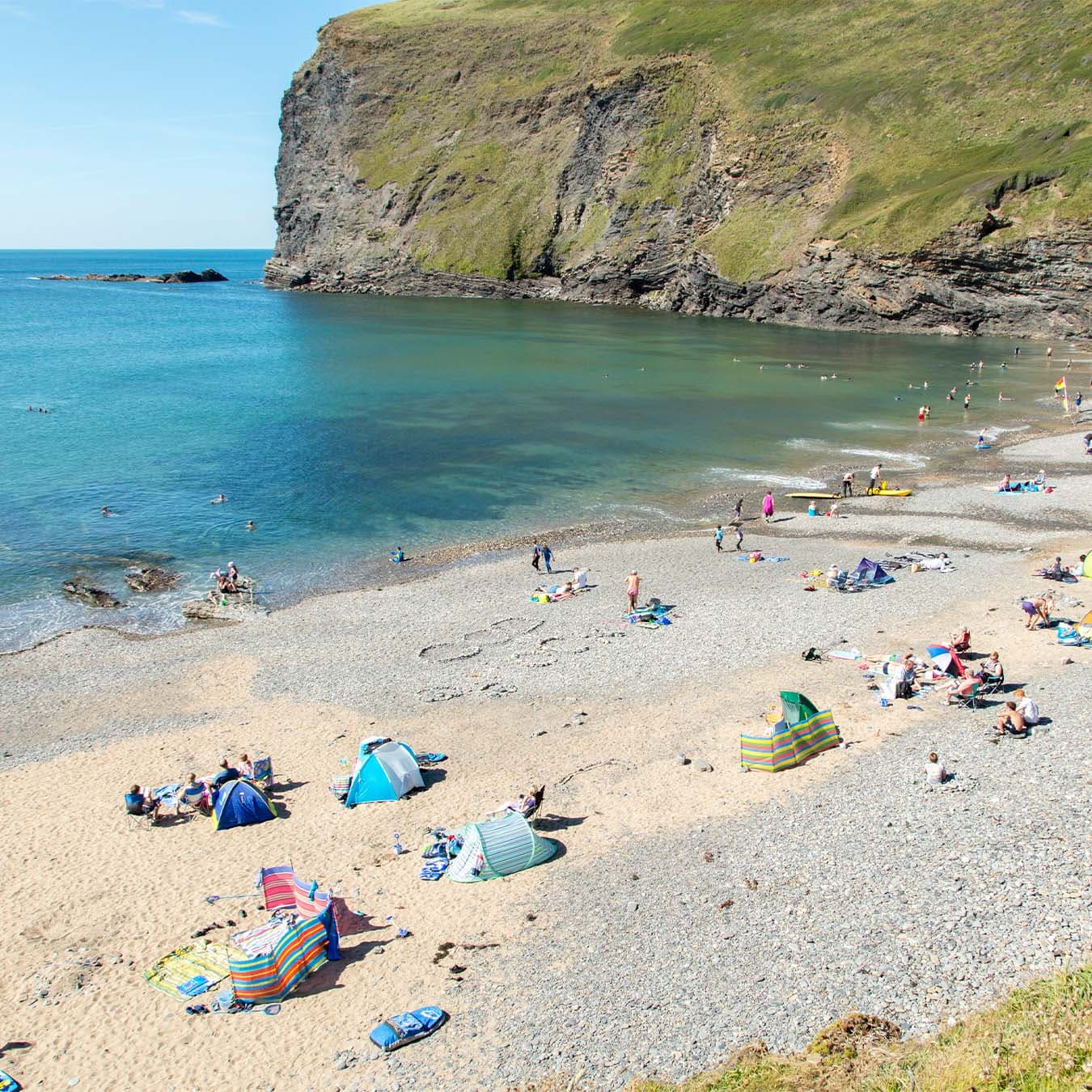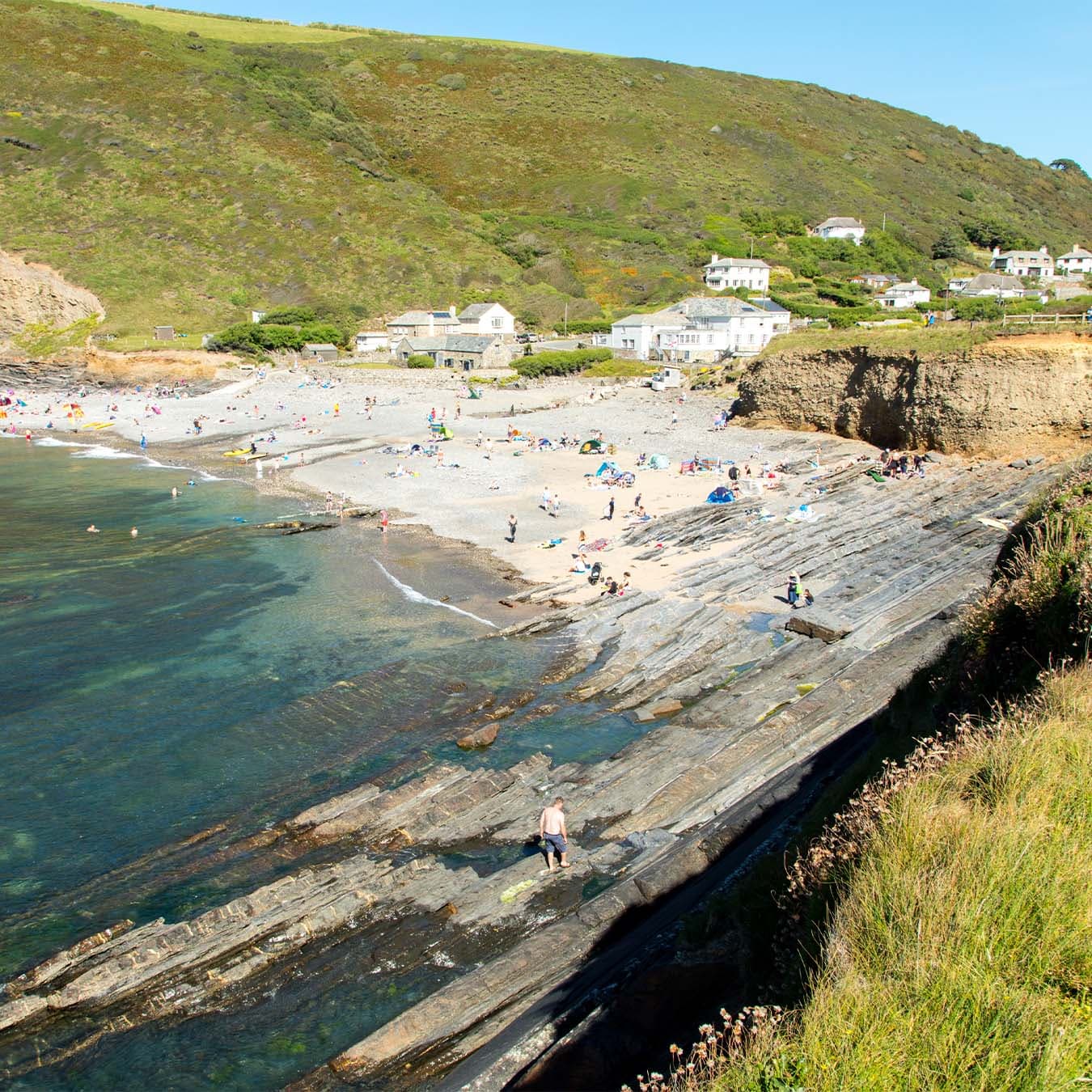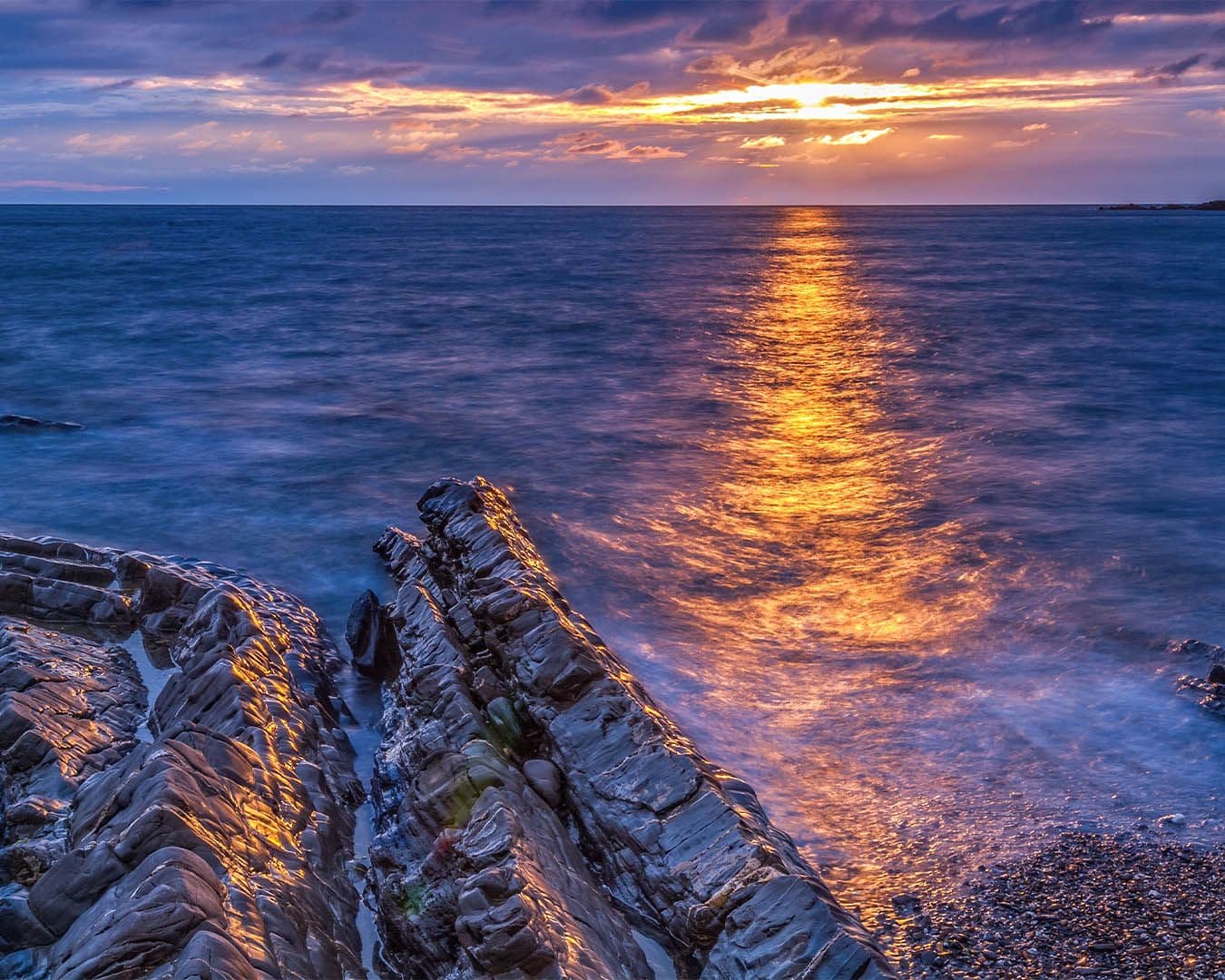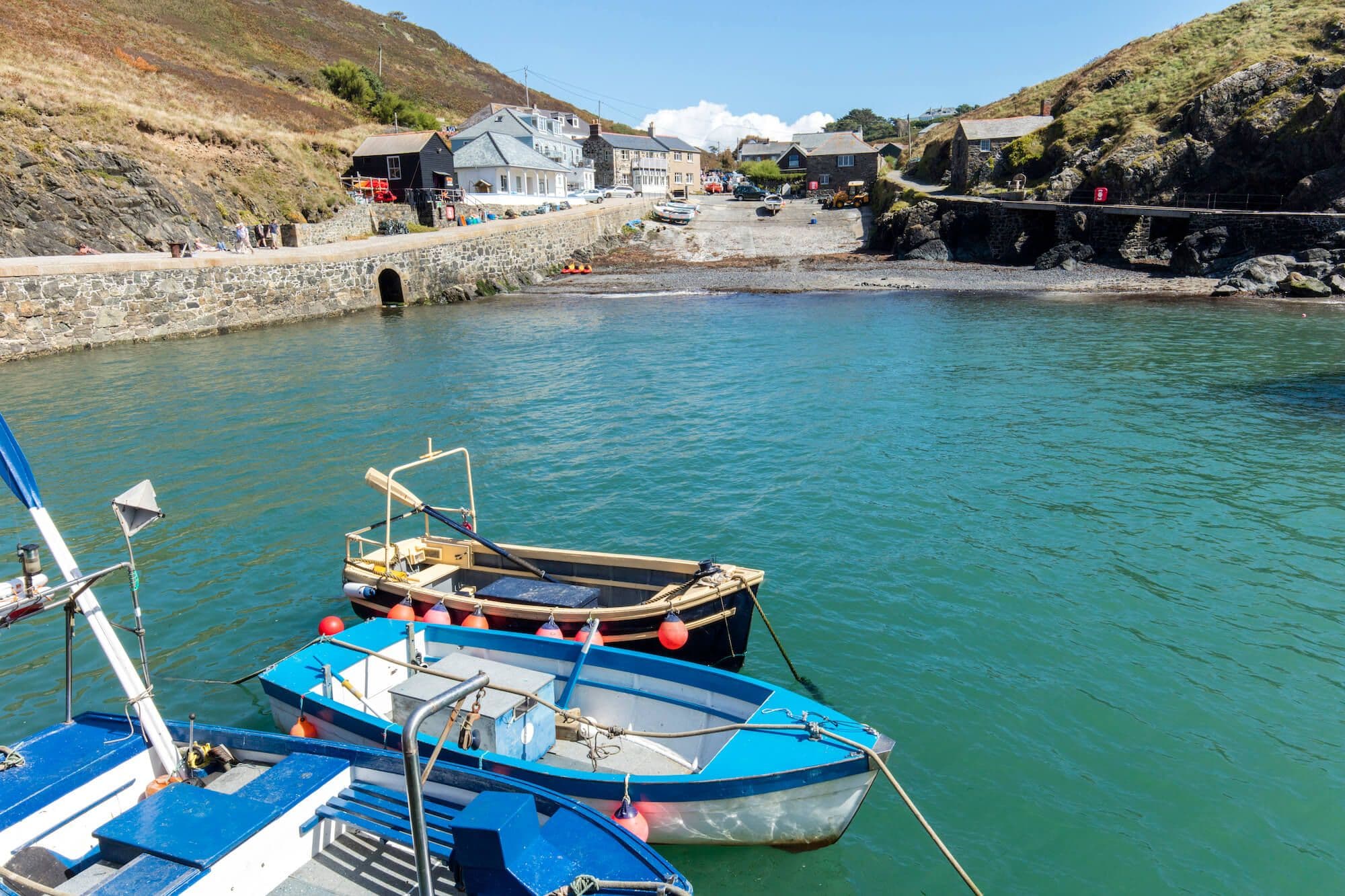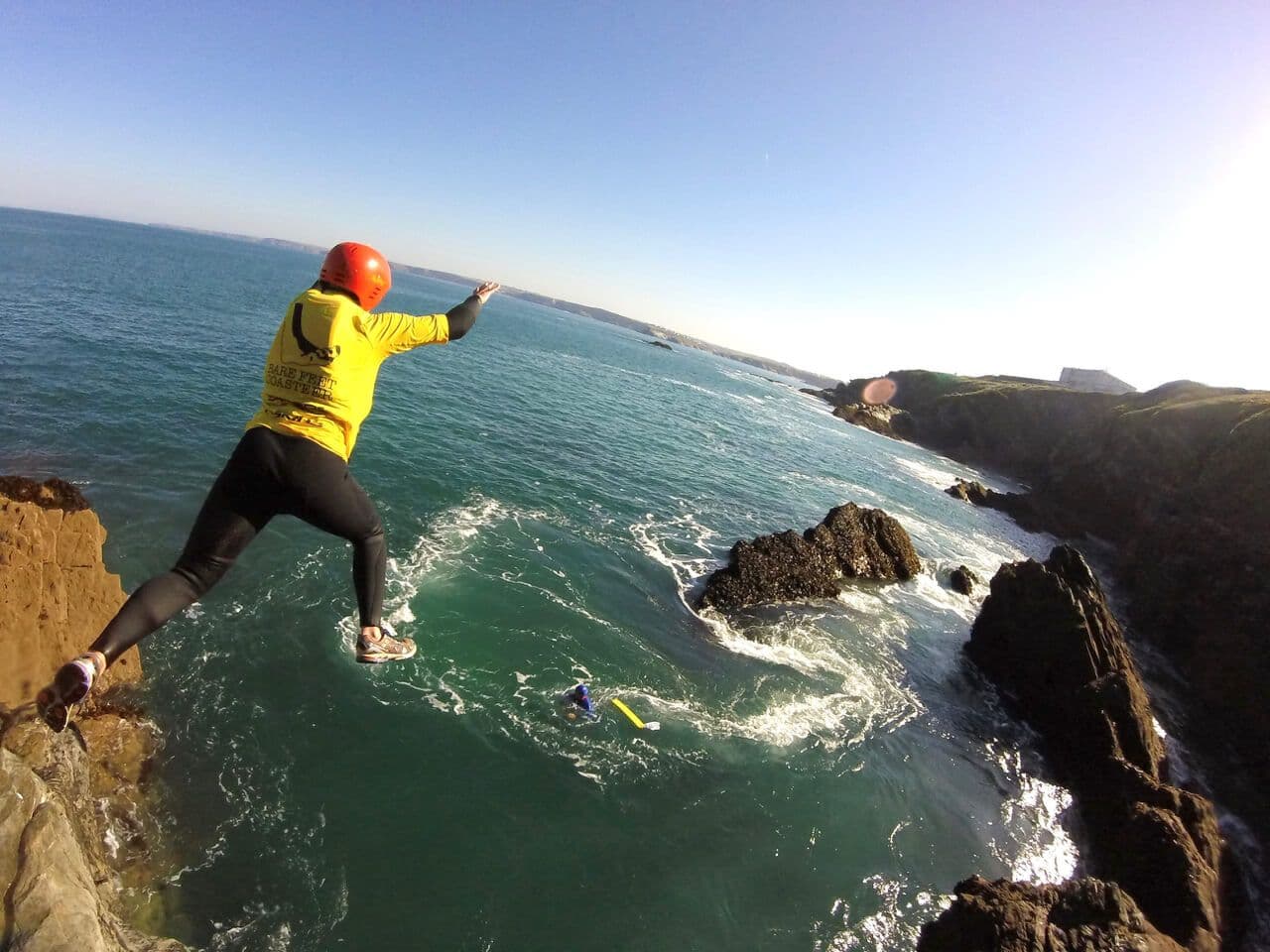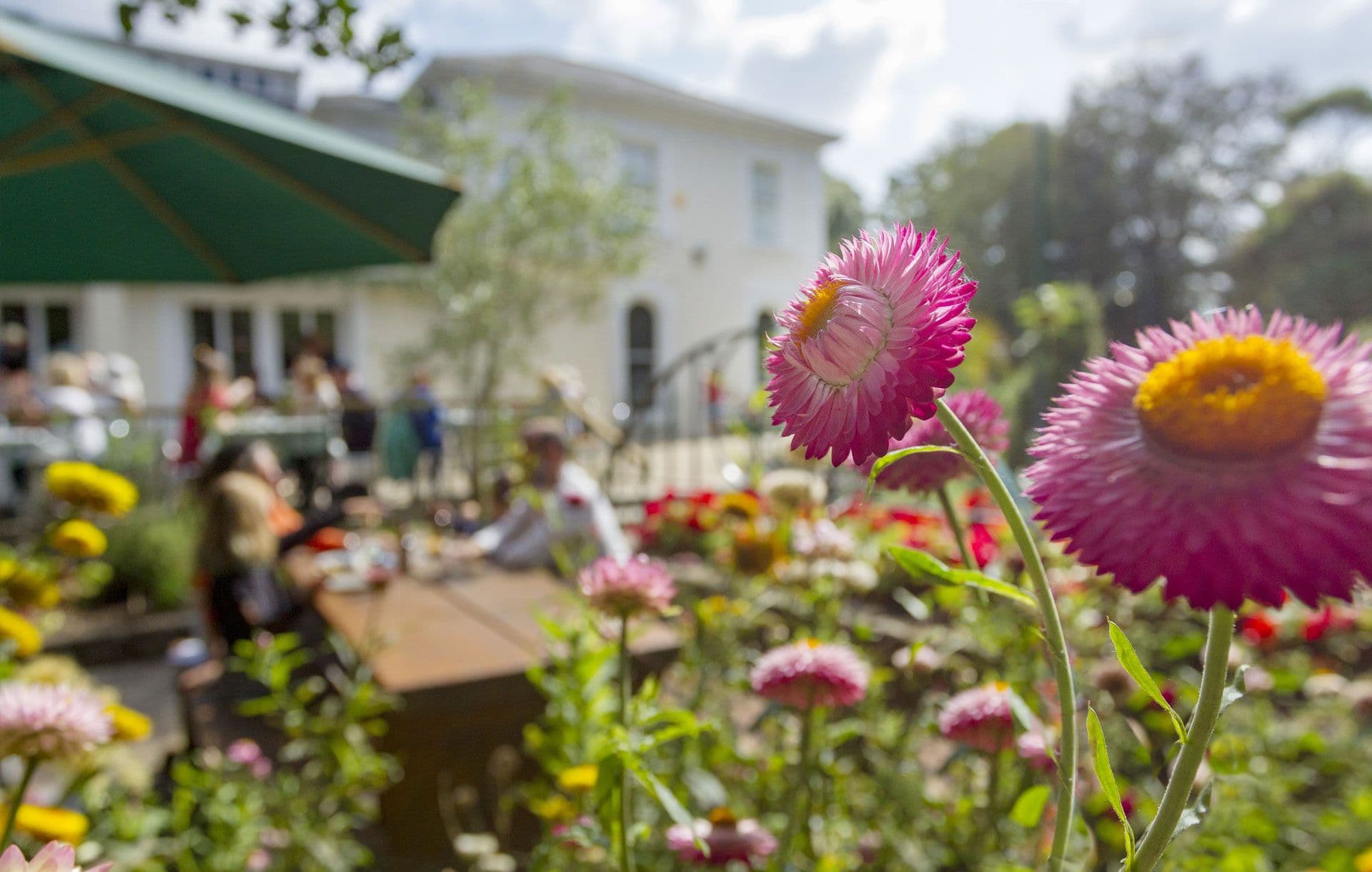Crackington Haven Beach
Address
Address: Crackington Haven, Bude, Cornwall, EX23 9JG

Tucked away on Cornwall’s north coast in an Area of Outstanding Natural Beauty, Crackington Haven is an unspoiled sand and shingle cove nestled between imposing cliffs.
Day out at Crackington Haven
The centrepiece of Crackington Haven is its sand and shingle beach, flanked by rugged, imposing cliffs on either side. Ideal for families and surfers alike, beachgoers can enjoy the sunshine splashing about in the surf or relaxing on the sand.
As the tide goes out, dozens of rock pools reveal themselves and the sheltering sea life within. Nearby, find a bistro café and family pub, toilet facilities and a small outlet for beach items.
A paradise throughout the year
Crackington Haven is an all year round destination. In the spring, the surrounding cliffs and hills are accentuated with vivid green grass, carpets of wild flowers and exotic birdsong.
Summertime sees a bustling beach life, as sunlight bathes the warm Atlantic waters, providing the perfect conditions for swimming. In the autumn, take a long walk along the tops of the cliffs and admire the power of the sea as it crashes against the rocks below.
Crackington Haven's history
Until the nineteenth century, Crackington Haven existed as a small port, importing coal and limestone for the local limekiln and exporting slate excavated from quarries in the area. Traces of a donkey path down to Strangle Beach, where one such quarry existed, still exist. In 1836, plans were drawn up to develop a 12 acre harbour, town, and railway station in Crackington Haven. Fortunately, the plans never materialised, and the area is as unspoiled as ever.
In recent times, the Crackington Haven area has become especially popular with geologists and tourists due to the spectacular sedimentary rock formations in the cliffs and on the beach. The cliffs to the north and south of Crackington, as well as the beach itself, exhibit fascinating examples of strata folded into dramatic zig-zags. So significant are these strata that the area even gave rise to the name of a geological phenomena: the Crackington Formation.
Plan your trip
Everything you need to know about getting to Crackington Haven.
Crackington Haven Bude Cornwall EX23 9JG
There is a single pay and display car park located in the centre of the village, just behind the beach. This can fill up during peak hours in the warmer months, however. Some spots for roadside parking are available on Mill Ball Hill.
Two main bus lines have routes through Crackington Haven: the 95 bus, which travels between Bude and Newquay; and the 181 line, which travels between Bodmin and Crackington Haven.
Lifeguards are on patrol between 10am-6pm each day throughout the summer holiday - please check the RNLI website for dates.
There is a seasonal dog ban on the beach between the 15th of May and the 30th of September, from 10am to 6pm. Dogs are welcome at all other times.
There is a pay and display car park located at the centre of Crackington Haven village, while there is also roadside parking available on the road down into the village.
Stay connected
Find us on socials and stay connected with the Cornwall you love.
We use cookies to personalise content and ads and to analyse our traffic. You consent to our cookies if you continue to use our website. (Privacy Policy)
